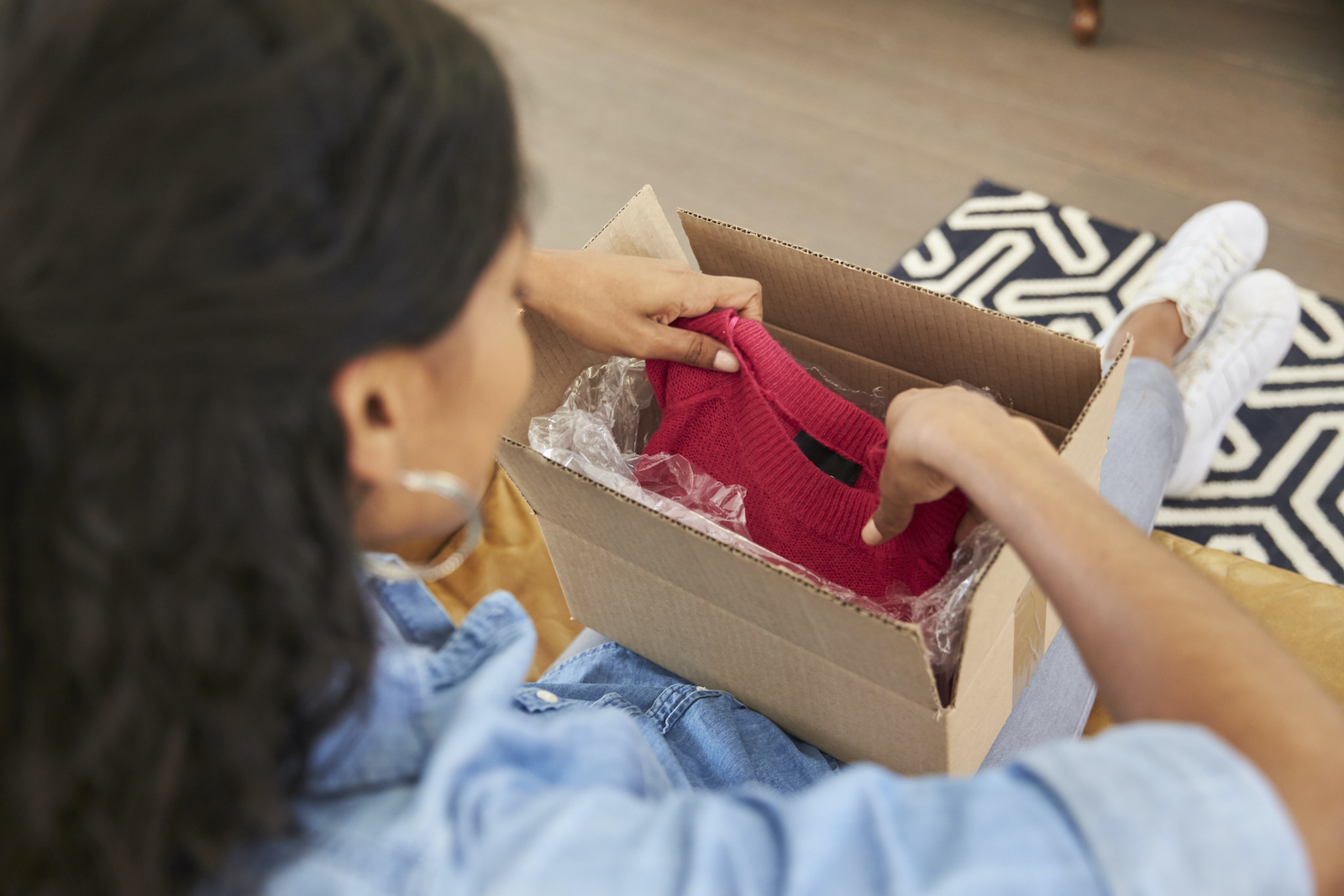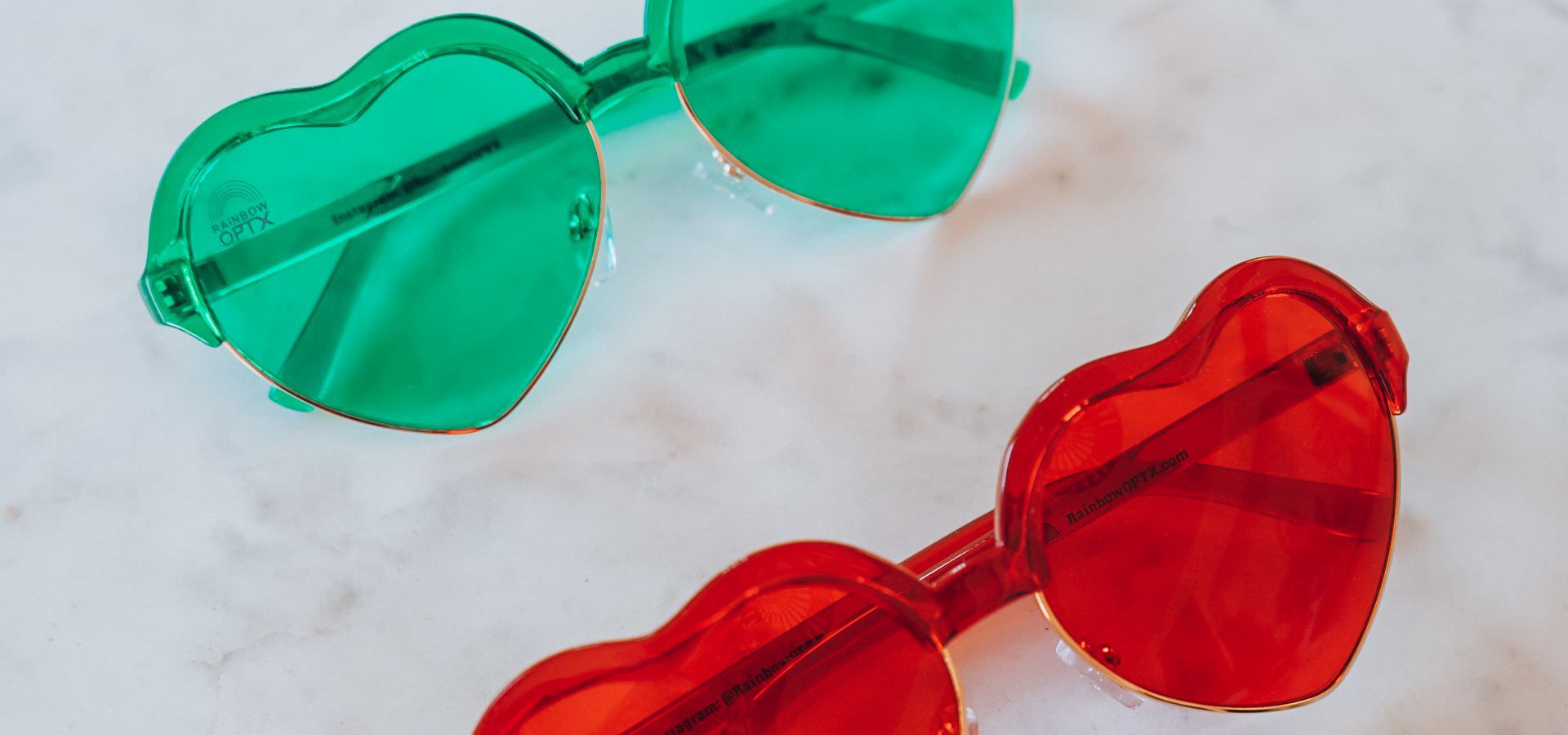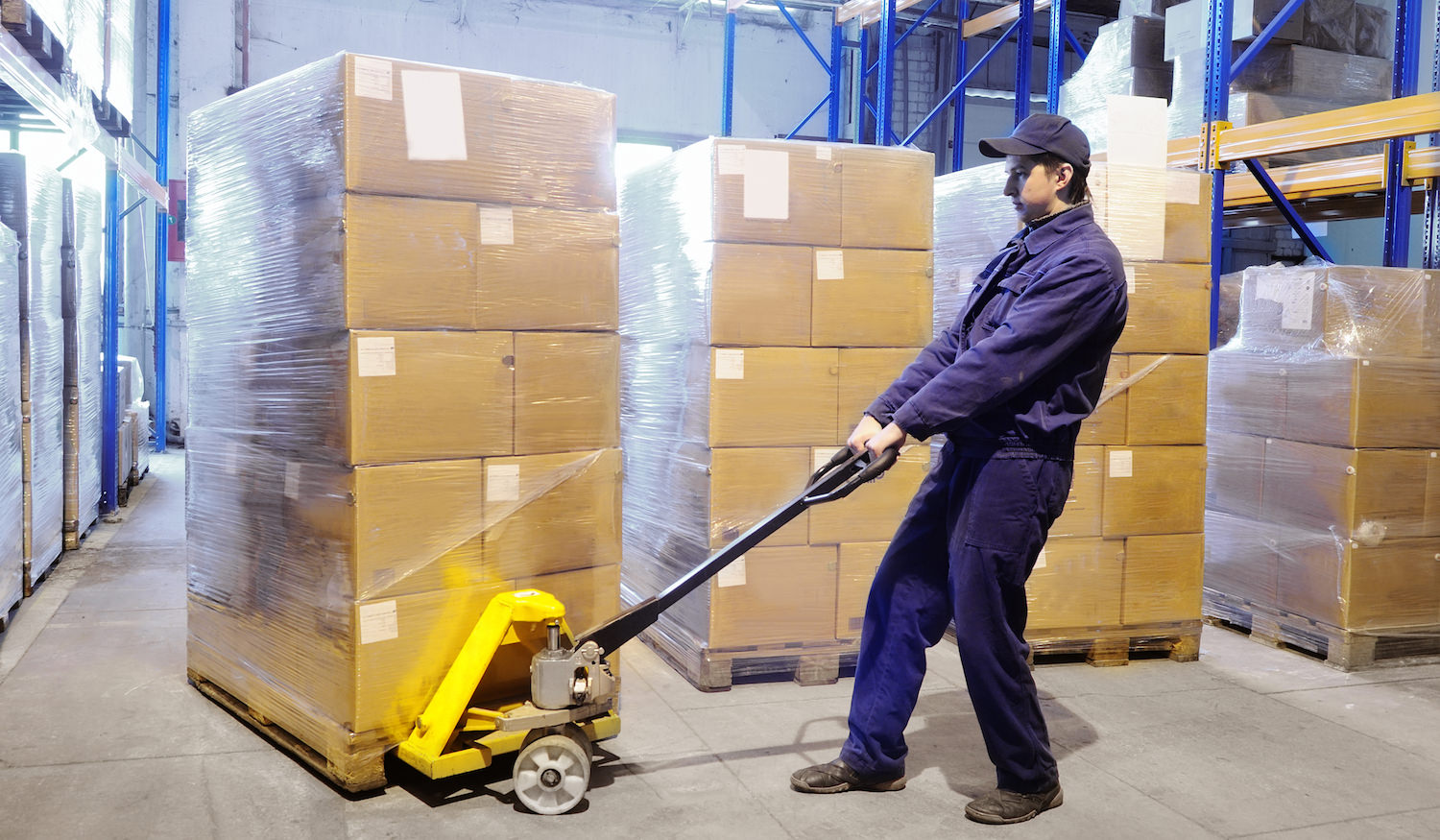Table of Contents
** Minutes
3 important considerations for your apparel line
How much does it cost to ship a t-shirt?
Launching an apparel line is about more than just a good eye for design. Here’s what to know and expect when ordering and shipping screen printed or embroidered soft goods like t-shirts, hoodies, and tote bags.
3 important considerations for your apparel line
When people start an apparel company their first concern is often branding: Who is going to purchase your products, why are they going to buy them, and what kind of image will the item project?
While having great designs and quality garments is definitely a make-or-break facet of your company, it’s also important to build a good foundation for printing shipping your products. After all, how are your customers going to see how awesome your apparel is if they never receive it?
From decoration options to customer-facing operations, here are 3 important things to keep in mind for your apparel business:
1. Screen printing vs. embroidery
One of the most common methods of putting designs on t-shirts is screen printing. Screen printing involves making stencils for each color of the design, then pushing ink through the stencils onto the shirt. The process of separating the colors in the design so that they can be made into stencils is called “separations.”
The more colors you have in your design, the more stencils needed to print, which can make prints with several different colors more expensive.
Embroidery is the more sophisticated cousin of screen printing. When working with a higher end garment, you may want to embellish it with something a little more refined and polished. Higher end polos, knits, fleeces, and dress shirts all tend to look better with embroidery, but the price is often higher than screen printing. You can order fewer items at a time as there are often no minimums for embroidery.
Pricing for this method is based on the number of stitches and the item quantity, so knowing what logo you want and the size you want it is important for receiving an accurate quote.
2. Shipping
Shipping is a vital part of any successful retail business, and apparel is no exception. There’s nothing worse than a really complicated printing or embroidery job going super smoothly until chaos erupts when you try to ship. The apparel industry is all about deadlines, and if a deadline is missed due to a shipping error, it doesn’t matter how great the tees turned out in the first place.
Whether you’re shipping direct-to-consumer or wholesale, knowing your recipient’s shipping and contact details and how to package their products is a crucial part of the logistics process It’s also important to make sure you are working with trustworthy companies who can get your product from point A to point B smoothly.
For example, Barrel Maker partners with ShipBob to prepare and ship printed apparel directly to their fulfillment centers, where they’ll handle shipping out each individual order to your customers.
3. Customer service
When choosing partners for your apparel brand — whether it’s a screen printing partner or a shipping provider — the best customer service teams will take a consultative approach. Experienced partners have encountered many similar projects to yours and will lead you along every step of the process, so don’t be afraid to let them know how you like to be communicated with and what your business’s specific needs are. In turn, this will help you provide the best experience possible to your customers.
T-shirt and apparel printing
If you’ve decided to order screen printed apparel for your brand, there are some important industry terms and concepts to be familiar with before you get started.
Ink types
There are a few different types of ink used in screen printing, including plastisol, water-based, and discharge. Some ink types will give you a really bright consistent color while others will be much softer or muted. Some inks sacrifice softness for brightness and vice versa. Your best bet is to let your screen printer know what you want your print to look like and print styles you want to emulate.
Small batch vs. large batch printing
Small batch or limited edition printing refers to ordering a smaller quantity of products at a time. There are a variety of reasons why you might want to order small batch printing instead of large. Maybe you’re ordering custom items for a smaller group, or maybe you want to run 36 pieces first just to see if something sells.
Most screen printers operate at a minimum, with price breaks along the way that get better the higher your quantity gets. This is due to the intensive setup that is undergone per design; the more items ordered, the more pieces you can divide the setup cost between. When you decide to start out small, keep these price breaks in mind.
Often orders below the minimum won’t be taken at all or will come with screen fees that can end up being more expensive than just ordering according to the minimum. It’s important to feel confident that your screen printer can handle any size order with the same type of quality control (QC) that you would expect from a dedicated craftsperson. At Barrel Maker, we have large automatic presses and small manual presses so we can handle both small and large batch printing with the same attention to detail.
Spoilage
In manufacturing, whether it be t-shirts, baby food, or cars, the word spoilage refers to inventory that got damaged or didn’t pass inspection before shipping. On an order of 10,000 shirts, you may assume that damaging a few shirts would be no big deal, and in most cases, you’re right. But on a smaller order, a shirt or two missing may cause more damage to your bottom line.
Screen printers usually have spoilage of about 3% per printed location on the item. So, if you have 100 shirts with a print on one spot like the front, you may have up to 3 pieces that are damaged. But if you order 50 shirts, and you have two printed locations per shirt, that spoilage rate could go up to 12 pieces. There are a few things you can do to curb this issue:
- Order extra quantity
- Simplify the number of designs going on each shirt
- Order with enough time that will allow you to place a follow-up order if needed
Quality control
Before each job, your screen printing partner will run a piece by a production manager for approval. The production manager approves the piece by inspecting both the physical item and the proof that you approved during the ordering process.
After the shirts or goods are printed, they go through a dryer to set or cure the ink. If they are embroidered, someone trims and steams each piece by hand. At each of these points, the garment gets carefully looked at to make sure it matches the piece that the manager approved.
Whether you’re having garments shipped yourself or from a third-party logistics (3PL) partner, catching an error or defect in a shirt order as early as possible is vital because it will always be cheaper and easier to fix before it reaches the customer.
How much does it cost to ship a t-shirt?
Shipping costs vary based on a variety of factors, including the carrier you ship through, whether you partner with a 3PL, how many shirts you ship at once, and more. Here is a breakdown of some variables that can affect overall logistics costs:
Quantity of shirts
The more you ship at once, the heavier and larger your shipment will be. And the heavier and larger your shipment, the more it will cost. This is due in part to dimensional weight pricing, which takes shipment dimensions into account when calculating shipping costs.
Shipping carrier and service
Different shipping carriers price their services differently. To get an idea for what shipping through different carriers costs, check out UPS’s shipping rate calculator here or USPS’s shipping rate calculator here. The service you choose from each carrier affects pricing, too; air shipping is nearly always more expensive than ground shipping, for example.
Domestic vs. international shipping
Where you ship can matter just as much as how. Shipping domestically is cheaper than shipping overseas, especially when shipping larger or heavier quantities of product. For domestic shipments, the more shipping zones it has to travel, the more expensive the shipment will be. Whether you ship from the United states or abroad, 3PLs can help with your international shipping options.
Fulfilling in-house vs. with a 3PL
Whether you choose to ship customer orders from home or work with a third-party fulfillment provider, different ecommerce fulfillment methods cost different amounts. Oftentimes working with a 3PL can be more cost-effective than in-house fulfillment based on volume discounts and the ability to ship from locations closer to the end customer.
How to ship t-shirts
Now that you know more about what goes into printing t-shirts for your apparel brand, you can consider your shipping strategy. There are three main options for shipping screen printed shirts to your customers: self-fulfilling, shipping from the printer, or partnering with a 3PL.
From your home or business
Taking control of shipping your shirts can be a full-time job, but if you have either a ton of time or a manageable order volume, it can be worthwhile. When you receive your printed apparel from the screen printer, you can separate based on size and color, then pack, label, and ship each individual order.
Shipping clothes from your home or business is also ideal if you want to have hands-on control over every step of the shipping process. For example, if you’re looking to add custom items like handwritten notes to every order, stick with shipping from home.
If you’re set on fulfilling orders in-house but have a very high volume of shipments each day, schedule pick-ups by USPS or FedEx instead of turning your car into a pack mule.
From the printer
Depending on who you work with, your screen printing partner may be able to handle retail fulfillment for you to a degree. Capabilities of printers vary from provider to provider, so be sure to explore all offerings before you get started.
For example, your screen printer might be able to sync with your online store to pull orders, or you may have to upload all orders manually. Some shops may also offer custom content stuffing, size tags, folding and bagging, rubberbanding, or other special packing options.
If your print shop’s capabilities match your business’s needs, shipping directly from the printer can be a great option since the shirts are already there and organized. However, keep in mind that this option can be costly.
From a 3PL
A logistics partner often has more advanced technology and data available, making it a great option for growing ecommerce brands who need access to shipping metrics and business insights. 3PLs can also accommodate high-growth, quickly scaling businesses.
Make sure to examine your business’s technology and fulfillment needs when choosing a fulfillment partner. The right 3PL should connect seamlessly with your online store and offer full control over inventory and order management — while taking the nitty gritty of shipping off your plate.
4 reasons to work with a 3PL for t-shirt fulfillment
Need more convincing that working with a 3PL is the right choice for t-shirt fulfillment? Here are four of the top benefits.
1. Keep sizing and SKUs all in one place
Unless you lease or own your own warehouse, a 3PL will simply have more space and better organization for your products. Their warehouse employees will keep all your inventory separated by SKU, which makes fulfillment faster and results in fewer errors.
2. Ship more quickly
Some fulfillment providers have multiple warehousing locations that you can use to store inventory closer to your end customers. This can shorten transit times and lower shipping costs which is a huge plus in the age of free 2-day delivery and Amazon Prime. Customers have come to expect their packages in a few business days, not weeks!
3. Save money
Third-party fulfillment providers often have volume discounts set up with shipping carriers based on the thousands of shipments they process and send out each day. Working with a 3PL can also help you save money by freeing up the time and money it costs to fulfill orders in house, giving you resources back to focus on other areas of growing your business.
4. Find the right partners
3PLs like ShipBob have relationships with providers across the ecommerce space, from screen printing and custom packaging to inventory financing and technology. Working with a 3PL can help you find the right partners to grow your business.
Learn more
When it comes to options for printing and shipping clothes and apparel, the possibilities can seem endless. That’s why it’s important to look for industry partners who can help you grow and scale your business as efficiently as possible. To learn more about screen printing, embroidery, and other custom services for creating apparel for your company, check out Barrel Maker Printing, a ShipBob partner.
Need help with fulfillment?
Get in touch with ShipBob to see if we’d be a good fit for your apparel business.



